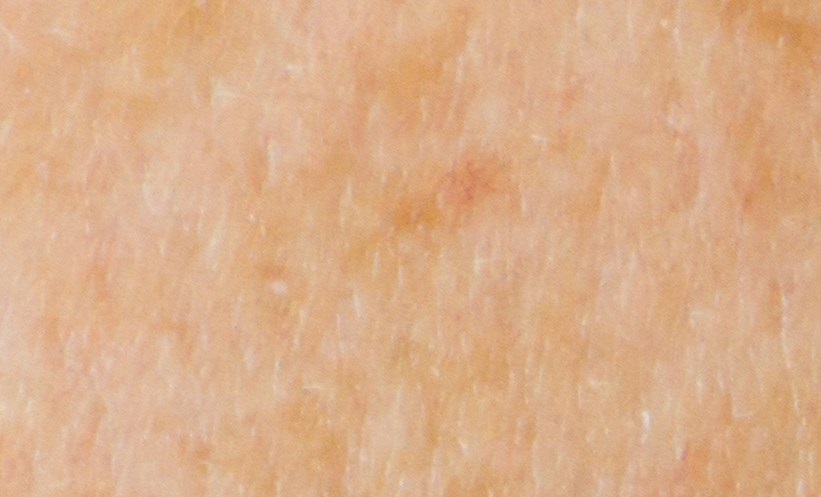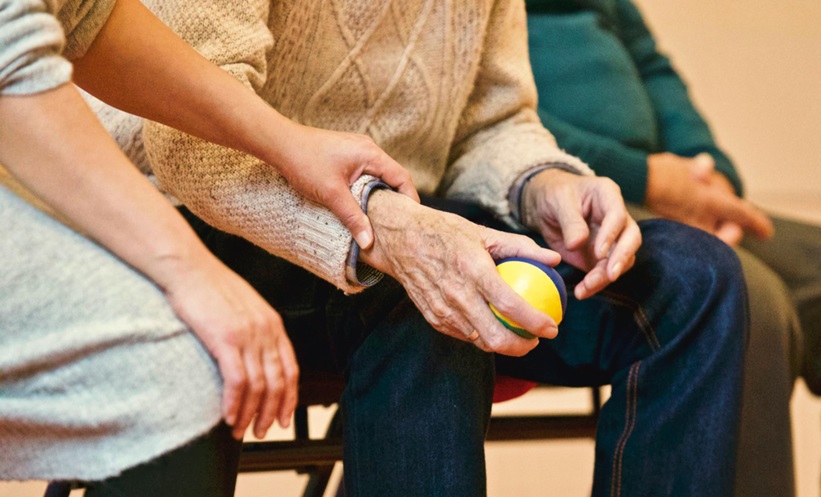Updated analyses of the pivotal Phase 3 CASTOR and POLLUX studies featured as an oral presentation at the American Society of Clinical Oncology (ASCO) 2017 Annual Meeting (Abstract 8006)1,2
Additionally, Phase 1b findings from the MMY1001 clinical trial assessing daratumumab combination therapy for newly diagnosed patients featured as an oral presentation (Abstract 8000)3,4
Beerse, Belgium, June 4, 2017 – Janssen-Cilag International NV (“Janssen”) today announced new data from updated analyses of the pivotal Phase 3 CASTOR and POLLUX clinical studies, demonstrating that Darzalex®▼ (daratumumab) in combination with Velcade® (bortezomib and dexamethasone, or lenalidomide and dexamethasone, improved progression-free survival (PFS) and the overall response rate (ORR) for previously-treated patients with multiple myeloma, regardless of cytogenetic risk.1,2 These data will be featured as an oral presentation at the American Society of Clinical Oncology (ASCO) 2017 Annual Meeting on Sunday, June 4 at 11:45 a.m. CDT.1
Additionally, data from the Phase1b MMY1001 study showed the potential of daratumumab in combination with carfilzomib, lenalidomide and dexamethasone (KRd) for newly diagnosed patients with multiple myeloma.3,4 These data represent the first assessment of daratumumab in combination with a next generation proteasome inhibitor (PI) and an immunomodulatory agent earlier in the treatment paradigm of multiple myeloma. The data are being presented as an oral presentation from 9:45 – 9:57 a.m. CDT on Sunday, June 4.3These data will also be featured in the Best of ASCO program, which aims to highlight the most cutting-edge science and education from the ASCO Annual Meeting.5
“These findings from the Phase 3 CASTOR and POLLUX trials show daratumumab delivered deep and durable responses for previously-treated patients, regardless of cytogenetic risk,” said Dr. Katja Weisel, Associate Professor, Department of Haematology and Oncology, University Hospital of Tuebingen, Tuebingen, Germany. “Daratumumab appeared to improve poor outcomes associated with high risk cytogenetics, and these data support its consistent clinical benefit in combination with two of the most widely used treatment classes.”
Updated data from those two Phase 3 clinical trials support the addition of daratumumab to standard of care regimens for previously-treated patients regardless of cytogenetic risk:1
- According to follow-up data from the CASTOR study, daratumumab (D), in combination with bortezomib (a PI) and dexamethasone (Vd), significantly reduced the risk of disease progression or death by 55% (Hazard Ratio [HR]=0.45; 95% CI [0.25-0.80]; p=0.0053) in patients with high risk cytogenetics (n=44) compared to Vd alone (n=51).1 Additionally, in patients with high risk cytogenetics the daratumumab combination regimen resulted in an ORR of 82% vs. 62% (p=0.2028), with very good partial response (VGPR) or better achieved in 64% vs. 35% of patients, and CR or better achieved in 34% vs. 9% of patients.1
- In patients with standard cytogenetic risk, the addition of daratumumab reduced the risk of disease progression or death by 74% (n=123; HR=0.26; 95% CI [0.18-0.37]; p<0.0001) compared to Vd alone (n=135).1 Additionally, the daratumumab combination regimen resulted in an ORR of 85% vs. 64% (p=0.0001), with VGPR or better achieved in 64% vs. 26% of patients, and CR or better achieved in 28% vs. 8% of patients treated with DVd vs. Vd, respectively. The median duration of follow-up was 19.4 months.1
- According to follow-up data from the POLLUX study, daratumumab (D), in combination with lenalidomide (an immunomodulatory agent) and dexamethasone (Rd), reduced the risk of disease progression or death by 47% (HR=0.53; 95% CI [0.25-1.13]; p=0.0921) in patients with high risk cytogenetics (n=28) compared to Rd alone (n=37).1 Additionally, in patients with high risk cytogenetics the daratumumab combination regimen resulted in an ORR of 85% vs. 67% (p=0.0435), with VGPR or better achieved in 64%1 vs. 31% of patients, and CR or better achieved in 38% vs. 6% of patients.1
- In patients with standard cytogenetic risk, the addition of daratumumab reduced the risk of disease progression or death by 70% (n=133; HR=0.30; 95% CI [0.20-0.47]; p<0.0001) compared to Rd alone (n=113).1 Additionally, the daratumumab combination regimen resulted in an ORR of 95% vs. 82% (p=0.0004), with VGPR or better achieved in 85% vs. 55% of patients, and CR or better achieved in 58% vs. 27% of patients treated with DRd vs. Rd, respectively.1 The median duration of follow-up was 25.4 months.1
A cohort in the Phase 1b MMY1001 EQUULEUS study showed that the overall safety profile of daratumumab (D) in combination with carfilzomib, lenalidomide and dexamethasone (KRd) in patients with newly diagnosed multiple myeloma was consistent with the known safety profiles of D and KRd, respectively.3 Serious treatment-emergent adverse events (TEAEs) such as pyrexia, influenza and pulmonary embolism, occurred in 46% of patients, 14% of which were potentially daratumumab-related.3 The most common Grade 3/4 haematologic TEAEs (≥30%) were lymphopenia (64%) and neutropenia (14%).3 Treatment with this daratumumab combination regimen yielded promising results with an ORR (≥partial response) of 100%, with 91% achieving VGPR or better and 43% achieving CR or better, after a short-term follow up.3
“These results, along with other data for daratumumab at ASCO, demonstrate its potential as a foundational therapy for multiple myeloma in combination with standard of care regimens for patients across different stages of their disease,” said Dr Catherine Taylor, Haematology Therapeutic Area Lead, Janssen Europe, Middle East and Africa (EMEA). “We are especially excited by the early data for daratumumab in newly diagnosed patients, which show promise for the future of daratumumab in the frontline setting.”
About Daratumumab
Daratumumab is a first-in-class biologic targeting CD38, a surface protein that is highly expressed across multiple myeloma cells, regardless of disease stage.6,7,8
On April 28, 2017 the European Commission (EC) approved a broadening of the existing Marketing Authorisation for daratumumab in combination with lenalidomide and dexamethasone, or bortezomib and dexamethasone, for the treatment of adult patients with multiple myeloma (MM) who have received at least one prior therapy.9 The first EC approval for daratumumab was received on May 23, 2016.
The EC initially granted conditional approval to daratumumab as monotherapy for the treatment of adult patients with relapsed and refractory MM, whose prior therapy included a PI and an immunomodulatory agent and who have demonstrated disease progression on the last therapy. Following recommendation from the EC, daratumumab in monotherapy has now transitioned from conditional approval to full marketing authorisation.9
Daratumumab induces rapid tumour cell death through apoptosis (programmed cell death)7,10 and multiple immune-mediated mechanisms of action, including complement-dependent cytotoxicity (CDC), antibody-dependent cellular cytotoxicity (ADCC) and antibody-dependent cellular phagocytosis (ADCP).7,11,12 Daratumumab has also demonstrated immunomodulatory effects that contribute to tumour cell death via a decrease in immune suppressive cells including T-regs, B-regs and myeloid-derived suppressor cells.7,13Daratumumab is being evaluated in a comprehensive clinical development programme that includes five Phase 3 studies across a range of treatment settings in multiple myeloma. Additional studies are ongoing or planned to assess its potential in other malignant and pre-malignant diseases in which CD38 is expressed. For more information, please see www.clinicaltrials.gov.
For further information on daratumumab, please see the Summary of Product Characteristics at https://www.medicines.org.uk/emc/medicine/32088.
In August 2012, Janssen Biotech, Inc. and Genmab A/S entered a worldwide agreement, which granted Janssen an exclusive license to develop, manufacture and commercialise daratumumab.
About Multiple Myeloma
Multiple myeloma (MM) is an incurable blood cancer that starts in the bone marrow and is characterised by an excessive proliferation of plasma cells.14 MM is the second most common form of blood cancer, with around 39,000 new cases worldwide in 2012.15 MM most commonly affects people over the age of 65 and is more common in men than in women.16The most recent five-year survival data for 2000-2007 show that across Europe, up to half of newly diagnosed patients do not reach five-year survival.17 Almost 29% of patients with MM will die within one year of diagnosis.18
Although treatment may result in remission, unfortunately, patients will most likely relapse as there is currently no cure. While some patients with MM have no symptoms at all, most patients are diagnosed due to symptoms that can include bone problems, low blood counts, calcium elevation, kidney problems or infections.19 Patients who relapse after treatment with standard therapies, including PIs and immunomodulatory agents, have poor prognoses and few treatment options available.20
About the Janssen Pharmaceutical Companies
At the Janssen Pharmaceutical Companies of Johnson & Johnson, we are working to create a world without disease. Transforming lives by finding new and better ways to prevent, intercept, treat and cure disease inspires us. We bring together the best minds and pursue the most promising science. We are Janssen. We collaborate with the world for the health of everyone in it. Learn more at www.janssen.com/emea. Follow us at www.twitter.com/janssenEMEA.
Note to the Editor
Cautions Concerning Forward-Looking Statements
This press release contains “forward-looking statements” as defined in the Private Securities Litigation Reform Act of 1995 regarding the potential of daratumumab and expectations for its further development. The reader is cautioned not to rely on these forward-looking statements. These statements are based on current expectations of future events. If underlying assumptions prove inaccurate or known or unknown risks or uncertainties materialize, actual results could vary materially from the expectations and projections of Janssen-Cilag International NV, any of the other Janssen Pharmaceutical Companies and/or Johnson & Johnson. Risks and uncertainties include, but are not limited to: challenges and uncertainties inherent in product research and development, including the uncertainty of clinical success and of obtaining regulatory approvals; uncertainty of commercial success; manufacturing difficulties and delays; competition, including technological advances, new products and patents attained by competitors; challenges to patents; product efficacy or safety concerns resulting in product recalls or regulatory action; changes in behavior and spending patterns of purchasers of health care products and services; changes to applicable laws and regulations, including global health care reforms; and trends toward health care cost containment. A further list and descriptions of these risks, uncertainties and other factors can be found in Johnson & Johnson’s Annual Report on Form 10-K for the fiscal year ended January 1, 2017, including under “Item 1A. Risk Factors,” its most recently filed Quarterly Report on Form 10-Q, including under the caption “Cautionary Note Regarding Forward-Looking Statements,” and the company’s subsequent filings with the Securities and Exchange Commission. Copies of these filings are available online at www.sec.gov, www.jnj.com or on request from Johnson & Johnson. None of the Janssen Pharmaceutical Companies or Johnson & Johnson undertakes to update any forward-looking statement as a result of new information or future events or developments.
References
- Weisel KC, San Miguel J, Cook G, et al. Efficacy of Daratumumab in Combination with Lenalidomide Plus Dexamethasone (DRd) or Bortezomib Plus Dexamethasone (DVd) in Relapsed or Refractory Multiple Myeloma (RRMM) Based on Cytogenetic Risk Status. Abstract 8006. Available at: http://abstracts.asco.org/199/AbstView_199_192466.html. Last accessed June 2017
- American Cancer Society. Multiple myeloma: early detection, diagnosis and staging. Available at: https://www.cancer.org/content/dam/CRC/PDF/Public/8740.00.pdf Last accessed June 2017.
Media Contacts
Natalie Buhl
Email: [email protected]
Mobile: +353 (0)85-744-6696
Investor Relations
Lesley Fishman
Phone: +1 732-524-3922
Joseph J. Wolk
Phone: +1 732-524-1142








